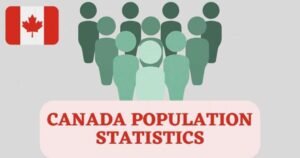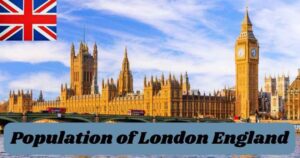The United Kingdom (UK), an island nation in northwestern Europe, comprises four constituent countries: England, Scotland, Wales, and Northern Ireland. Each has its own distinct identity, culture, and legal system, yet they all fall under the sovereignty of the British Crown and the UK Parliament. London, the capital city, is a global hub for finance, arts, and politics, reflecting the UK’s historical legacy and contemporary influence.
The population of the UK, estimated at around 68 million in 2024, is one of the largest in Europe. This population is concentrated mainly in urban areas, with significant numbers residing in cities like London, Birmingham, Manchester, and Glasgow. The UK has a diverse demographic makeup, with communities from a wide array of ethnic, cultural, and religious backgrounds. This diversity is a result of historical factors, including the British Empire’s colonial past and the subsequent waves of immigration, particularly from former colonies in the Caribbean, South Asia, and Africa. This multiculturalism is reflected in the UK’s vibrant cultural scene, culinary diversity, and various festivals and celebrations.
UK Population
According to the World Bank data, the UK population in 2022 is 66,971,395.
According to the UK government based Office for National Statistics (ONS) data, at mid-2022, the estimated population of the United Kingdom (UK) was 67.6 million (67,596,281). This figure represents the combined population estimates of its four constituent countries: England, Scotland, Wales, and Northern Ireland. England, the largest and most populous of the four, contributes the majority of the population, with major urban centres like London, Birmingham, and Manchester housing significant portions of the populace. Scotland, with its capital Edinburgh, Wales, with Cardiff as its capital, and Northern Ireland, with Belfast as its capital, each add their own unique demographics and cultural contributions to the overall population makeup of the UK.
| Population (mid-2011) | Population (mid-2022) | Median Age (mid-2011) | Median Age (mid-2022) | Population Density (pop per sq. km) (mid-2011) | Population Density (pop per sq. km) (mid-2022) | |
|---|---|---|---|---|---|---|
| UK | 63,285,000 | 67,596,000 | 39.6 | 40.7 | 261 | 279 |
The table presents demographic data for the United Kingdom (UK) at two points in time: mid-2011 and mid-2022. Over this 11-year period, the population of the UK increased from 63.3 million to 67.6 million, reflecting a significant growth of over 4 million people. This growth can be attributed to various factors, including natural population growth (births minus deaths) and net migration. The median age of the population also rose from 39.6 years in 2011 to 40.7 years in 2022, indicating an ageing population. This trend is consistent with many developed nations, where lower birth rates and increased life expectancy contribute to a higher median age.
Additionally, the population density of the UK increased from 261 people per square kilometre in 2011 to 279 people per square kilometre in 2022. This rise in population density highlights the continuing urbanization and concentration of people in certain areas, especially in major cities like London, Birmingham, and Manchester. These demographic changes have significant implications for various aspects of society, including healthcare, housing, and infrastructure, as the UK adapts to a larger and older population.
Current UK Population 2024
In 2024, the estimated population of UK is estimated to be 67.9 million people.
The below table provides current population estimates for the United Kingdom from four different sources as of the year 2024.
| SOURCES | CURRENT POPULATION | YEAR |
|---|---|---|
| Worldometers.info | 67,957,746 (67.9M) | 2024 |
| Worldpopulationreview.com | 67,953,509 (67.9M) | 2024 |
| Countrymeters.info | 69,635,604 (69.6M) | 2024 |
| Statista.com | 68,570,000 (68.5M) | 2024 |
Worldometers.info reports the UK population at approximately 67.96 million, while Worldpopulationreview.com offers a similar figure of 67.95 million. These two sources are closely aligned, suggesting a high degree of consistency and reliability in their data collection methods. Their estimates indicate steady population growth, reflecting ongoing demographic trends such as natural population increase and immigration.
In contrast, Countrymeters.info provides a higher estimate of 69.64 million, which is significantly above the other figures. This discrepancy highlights the variability that can arise from different methodologies and data sources.
Statista.com presents an estimate of 68.57 million, which falls between the figures from Worldometers.info/Worldpopulationreview.com and Countrymeters.info. This mid-range estimate suggests a more moderate approach, possibly balancing various factors and data inputs to arrive at its number.
Overall, while there is some variation, the consensus is that the UK population is steadily increasing, with estimates ranging from approximately 67.95 million to 69.64 million.
United Kingdom Demographics
UK Population by Gender 2024
| Gender | Mid-2011 Population | Mid-2022 Population |
|---|---|---|
| Female | 33,393,100 | 35,539,665 |
| Male | 31,778,200 | 33,739,093 |
The table illustrates the demographic changes in the UK over an 11-year period, highlighting the population growth and gender distribution shifts. From mid-2011 to mid-2022, the female population increased from 33.4 million to 35.5 million, while the male population rose from 31.8 million to 33.7 million. This represents a growth rate of approximately 6.4% for females and 6.2% for males, indicating slightly faster growth among females.
Despite both genders experiencing population growth, the gender gap widened from 1.6 million in mid-2011 to 1.8 million in mid-2022, reflecting ongoing demographic trends such as life expectancy differences and migration patterns. These changes have implications for policy and planning in areas such as healthcare and social services, emphasizing the need to address the evolving demographic landscape in the UK.
UK Population by Age 2024
The below table categorizes the population data of the United Kingdom into four distinct age groups: 0 to 15 years, 16 to 64 years, 65 years and above, and 85 years and above, comparing mid-2011 and mid-2022 figures for both females and males.
| Age Group | Mid-2011 Population (Female) | Mid-2022 Population (Female) | Mid-2011 Population (Male) | Mid-2022 Population (Male) |
|---|---|---|---|---|
| 0 to 15 | 5,797,077 | 6,054,518 | 6,085,803 | 6,351,416 |
| 16 to 64 | 20,570,124 | 21,540,165 | 20,373,955 | 20,913,731 |
| 65+ | 5,820,685 | 6,896,818 | 4,637,501 | 5,839,633 |
| 85+ | 950,178 | 1,048,164 | 457,280 | 634,313 |
Analysis
- Youth Population (0 to 15 years): Both female and male populations in the 0 to 15 age group have increased from mid-2011 to mid-2022. This suggests a steady birth rate and potentially higher fertility rates or improved child healthcare contributing to lower mortality rates in this age group.
- Working Age Population (16 to 64 years): The population of working-age individuals (16 to 64 years) has seen a significant increase. The growth in this demographic is crucial for the economy, as it implies a potentially larger labor force, increased productivity, and greater economic output. The increase also reflects positive net migration trends, with more individuals moving into the UK within this age range.
- Senior Population (65 years and above): The population aged 65 and over has grown substantially, with a notable rise in both females and males. This increase indicates improved life expectancy and better healthcare services, leading to an ageing population. The growing number of seniors poses challenges for social services, healthcare, and pension systems, necessitating policies to support this demographic’s needs.
- Elderly Population (85 years and above): The population of those aged 85 and above has also increased, particularly among males, whose numbers have grown more sharply compared to females. This demographic shift underscores the advancements in healthcare and living conditions that allow people to live longer. However, it also highlights the need for enhanced elder care facilities and services to cater to the specific needs of this age group.
Overall, these trends reflect the dynamic demographic changes in the UK, with significant implications for social policies, economic planning, and healthcare services. The population growth across all age groups suggests a vibrant and growing society, but it also requires strategic planning to address the needs of an ageing population and to sustain economic growth.
Religion Population in UK
The religion population in the UK, as revealed by the 2021-22 census, offers a detailed look into the country’s diverse religious demographics. Christianity remains the predominant faith, with nearly half of the population identifying as Christian. A significant portion identifies as having no religion, comprising over a third of the population. Islam, Hinduism, Sikhism, Judaism, and Buddhism contribute to the UK’s religious mosaic, each representing smaller but significant communities. This census data highlights ongoing shifts in religious identity and secularization trends, shaping discussions on cultural diversity and guiding policy-making in contemporary Britain.
| Religion | Number | Percentage (%) |
|---|---|---|
| Christianity | 31,149,224 | 46.53 |
| Islam | 3,998,875 | 5.97 |
| Hinduism | 1,066,894 | 1.59 |
| Sikhism | 535,517 | 0.79 |
| Judaism | 277,613 | 0.41 |
| Buddhism | 289,551 | 0.43 |
| Other religion | 388,789 | 0.58 |
| No religion | 25,273,945 | 37.75 |
| Religion not stated | 3,960,980 | 5.91 |
The census data highlights several key trends and insights into the religious composition of the UK. Christianity, while still the largest religious group with 46.53% of the UK population, has experienced a decline in absolute numbers and percentage share compared to previous census periods. This decline reflects broader societal shifts towards secularization and the decreasing influence of traditional religious institutions in contemporary British life. The growth of the non-religious population is particularly notable, comprising 37.75% of the total population. This trend underscores a significant demographic shift where a substantial portion of the population identifies as atheist, agnostic, or having no religious affiliation.
Islam, as the second largest religion with 5.97% of the population, continues to maintain a steady presence and has shown modest growth since previous census periods. Hinduism, Sikhism, Judaism, and Buddhism, while representing smaller percentages individually (ranging from 0.41% to 1.59%), collectively contribute to the religious diversity of the UK. These minority religions play significant roles in cultural and social spheres, contributing to the multicultural fabric of British society.
The data also reveals a notable proportion of individuals (5.91%) who did not state their religious affiliation. This category highlights the complexity of religious identity in the UK, where some individuals may prefer not to disclose their beliefs or may identify with non-traditional or evolving spiritual practices not captured by conventional religious categories.
Disclaimer: The data research report we present here is based on information found from various sources. We are not liable for any financial loss, errors, or damages of any kind that may result from the use of the information herein. We acknowledge that though we try to report accurately, we cannot verify the absolute facts of everything that has been represented.








